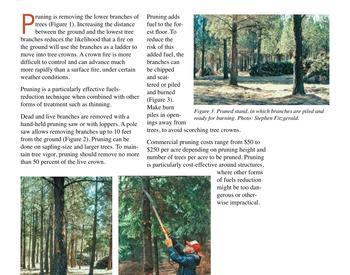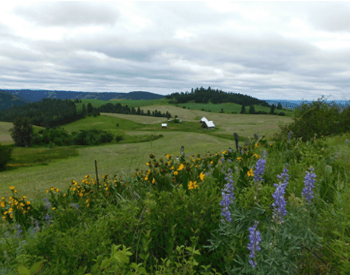If you manage a woodland or forest, management planning is an essential tool. For small woodland owners, we focus on long-term management plans. However, these plans don’t usually reach the level of detail that a forest manager might need to determine the exact activities they would plan every year. That usually requires an annual plan. Let’s look deeper into why you’d want a management plan and a yearly plan and what each entails.
Management planning usually refers to a longer-term management plan of 10 years. These are like a corporate strategic plan. They establish a framework for your property that establishes your long-term goals and objectives and usually include ideas and buy-in from family, partners and consultants. These plans are essential because they help you to:
- Focus your thinking on management and identify opportunities.
- Increase your engagement with your land.
- Clarify your values and approach to ownership and management.
- Document the baseline conditions of your forest.
- Save time and money by avoiding costly mistakes.
- Communicate with others who use the property or may care for it in the future – like family.
- Opens the doors to financial assistance and sustainability certification opportunities.
Annual plans, however, are more similar to tactical plans. They use the strategy or goals and objectives identified in the long-term plan to guide the more specific activities that will be accomplished in the calendar year. Annual plans should include more detailed timelines, specific activities, budgets, and maps of treatment areas. These plans are usually developed by the focused decision-makers and the day-to-day managers of the property.
Developing these plans is all about timing
You’ll need to consider the activities you want to do concerning markets, weather, operator availability, plant biology, personal activities and your finances. For example, if you are considering a thinning operation, you’ll want to think about the following:
- Market: Are trees in demand and fetching higher prices, or is too much inventory pushing prices down?
- Weather: Are your roads accessible in rain or snow; are you concerned about the potential of working in the depths of fire season?
- Operator availability: Most loggers are busy in the summer, and small jobs are less attractive.
- Biology: Sap is running in the spring and thinning can cause bark slippage on your remaining trees if there is logging damage. Are you thinning pine? Ips beetles fly in the spring and could be attracted to your property during the logging.
- Personal activities: Maybe you are hosting a family reunion on the property and don’t want an operation to affect the festivities.
- Finances: Do you need to build a road to access the trees to be thinned? Can you afford to build the road before the harvest income is received?
Annual plans can also help you stay on task with your activities and avoid costly mistakes by linking operations that can save you money and time. For example, linking a harvest with road building. Road building is expensive, but if you plan a crop that can be done before, you might have more liquid finances to pay for the road build. Or, if the contractor doing the road is also assisting with the logging, you only have to pay the set-up costs once instead of twice.
While annual plans only last a year, you’ll consider how they fit into your management strategy, mesh with last year’s activities and what you plan for the following year. Remember to be realistic because these activities can sometimes take a while, and weather or fire seasons can be unpredictable. Use a priority rating to help you decide what must happen and what can fall off the table and be considered for next year. Usually, lower-priority activities are stand-alone and higher priorities would lead to cascading changes or upsets if they do not happen.
Annual plans can be organized as a matrix by month or as a narrative. With either style, a map of your proposed activities is always recommended. You’ll also want to include a budget reflecting relative cost or income expectations. While you won’t be able to predict these exact numbers, estimates can help keep you on track and avoid taking large financial risks.
Your annual plan aims to optimize efficiency and effectiveness and get things done. It is all about timing!

















